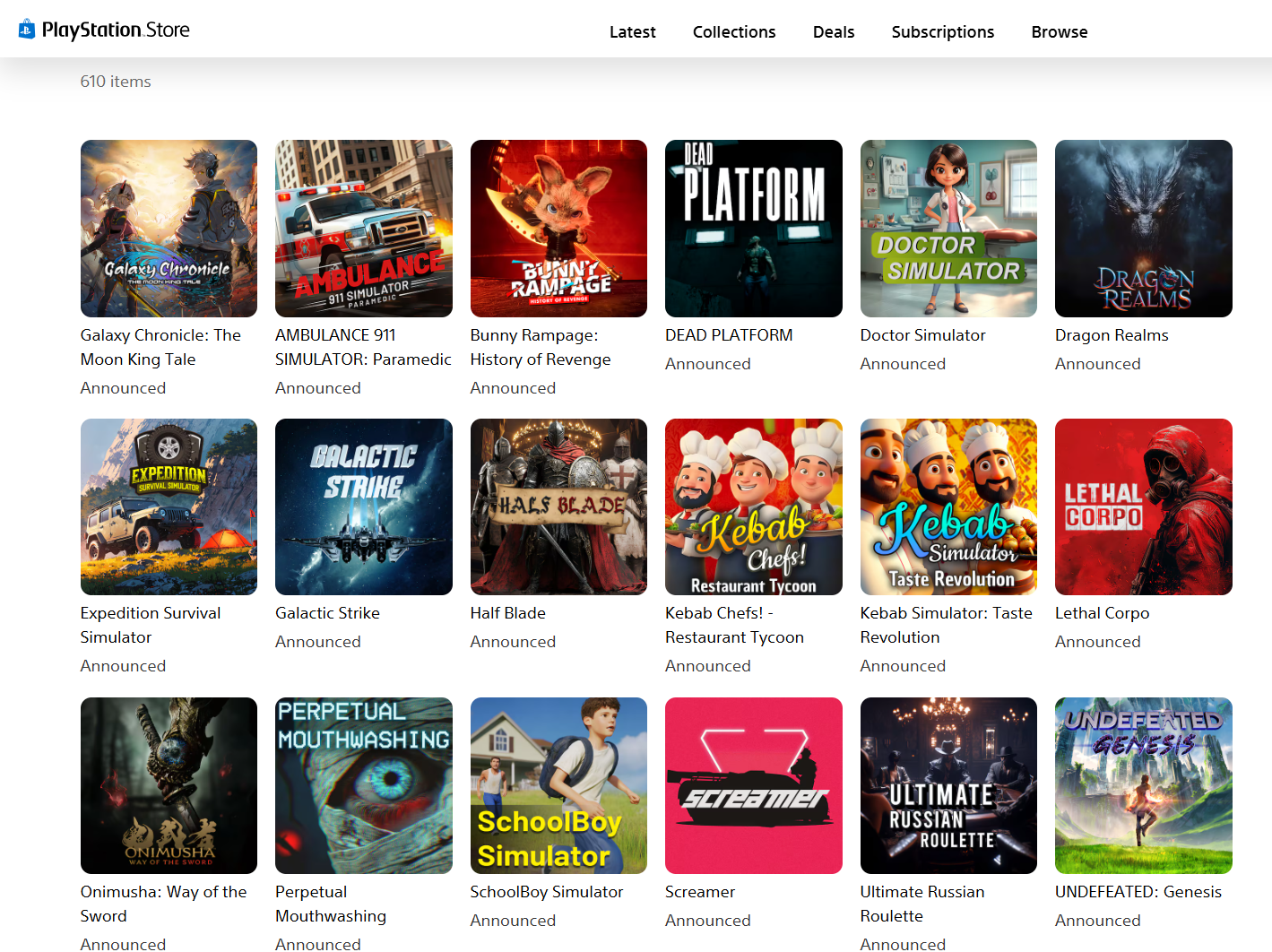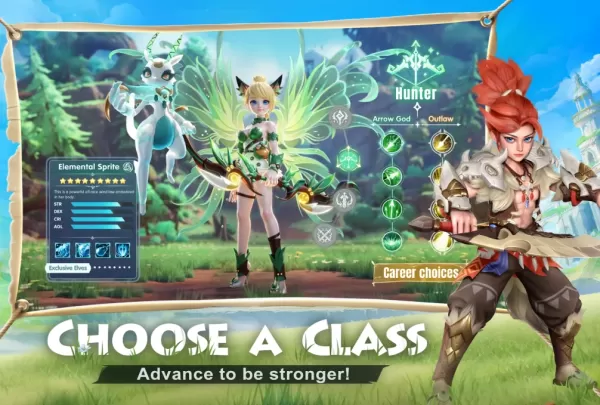There's been an intriguing development unfolding on the PlayStation Store and Nintendo eShop over recent months, where users have noticed an influx of what's been colloquially dubbed "slop." This term refers to a surge of low-quality games that seem to exploit generative AI and misleading store pages to lure unsuspecting buyers into purchasing games that fail to deliver on their promises.
Publications like Kotaku and Aftermath have shed light on this issue, particularly highlighting how the eShop has become a breeding ground for these deceptive games. The problem has now extended to the PlayStation Store, with the "Games to Wishlist" section becoming a hotspot for these dubious entries. These games, often categorized as sim games, are perpetually on sale, mimicking themes from popular titles, and even outright copying their names. They frequently feature hyper-stylized art and screenshots that hint at the use of generative AI, yet the actual gameplay and visuals starkly contrast with the store's promises. Players often find these games to be janky, with subpar controls and a host of technical issues, offering little in terms of engaging content.
The situation is exacerbated by the fact that these games are churned out by a small number of elusive companies, which are notoriously hard to trace, as noted by YouTube creator Dead Domain. These companies often rebrand to further complicate accountability. This flood of "slop" has led to increasing demands from users for better regulation of these storefronts, particularly as technical performance on the Nintendo eShop continues to decline under the strain of this content overload.
The Magical World of Cert
To understand how these games end up on these storefronts, I consulted with eight anonymous experts in game development and publishing, who have extensive experience across Steam, Xbox, PlayStation, and Nintendo Switch. They provided insight into the certification process, which is crucial to game release on any platform.
The certification (or "cert") process typically involves developers or publishers pitching their game to the platform holder, gaining access to backend portals and devkits. They then complete forms detailing the game's features and technical requirements. The cert process ensures the game meets specific platform standards, such as handling corrupted saves or controller disconnections. Unlike Steam and Xbox, which publish their requirements, Nintendo and Sony keep theirs private.
Certification also verifies legal compliance and adherence to ESRB ratings. Contrary to popular belief, cert is not a QA check but rather a compliance test to ensure the game meets hardware specifications. If a game fails cert, it's sent back for fixes, often with vague feedback, especially from Nintendo.
Front and Center
Regarding store pages, platform holders require accurate screenshots but lack a rigorous process to enforce this. Reviews mainly focus on avoiding competing imagery and ensuring language appropriateness. An example was given where a developer mistakenly submitted PC screenshots for a Switch game, which were flagged by Nintendo. However, the store team and cert team operate independently, sometimes on different continents, complicating oversight.
Nintendo and Xbox review all store page changes, while PlayStation does a single check near launch, and Valve only reviews initially, allowing subsequent changes without further review. The enforcement of store page accuracy varies, and the penalty for misleading content is typically just a request to remove the offending material.
Interestingly, none of the console storefronts have policies against using generative AI, whereas Steam asks developers to disclose its use without restricting it.
Eshop to eslop
The question remains: why are Sony and Nintendo's stores flooded with these low-quality sim games, while Xbox and Steam seem less affected? The key lies in the approval processes. Microsoft uniquely vets games on a per-game basis, making it harder for low-quality games to flood the store. In contrast, Nintendo, Sony, and Valve approve developers, allowing them to release multiple games more easily once approved.
Nintendo's process, in particular, seems vulnerable to exploitation, with developers able to release questionable titles with minimal repercussions. Some developers use tactics like releasing bundles with perpetual discounts to stay at the top of sales and new release lists, pushing out more deserving games.
While generative AI is often blamed, the core issue is more about the ease of flooding stores with generic, low-effort games. Xbox's curated store pages help mitigate this problem, making it less visible to users. PlayStation's "Games to Wishlist" section, sorted by release date, inadvertently promotes these games.
Steam, despite having the most potential "slop," benefits from robust sorting and discovery options, and its constant refresh of new releases helps dilute the impact of these games. Nintendo, however, seems to have the least effective system, simply dumping all new releases into an unsorted list.
All Games Allowed
The call for better regulation is loud, but responses from Nintendo and Sony have been silent. Developers are skeptical about significant improvements, with some expressing hope that the Nintendo Switch 2 might adopt a more user-friendly approach similar to the web browser version of the eShop.
Sony has taken action against similar issues in the past, suggesting they might do so again. However, overly aggressive filtering, as seen with Nintendo Life's "Better eshop," can wrongly categorize legitimate indie games, raising concerns about potential overreach in quality control.
Developers emphasize that while they understand the need for regulation, they fear that stringent measures might inadvertently target quality games. The challenge for platform holders is to balance allowing a variety of games while curbing cynical cash grabs, a task complicated by the sheer volume of submissions they must review.

The 'Games to Wishlist' section on the PlayStation Store at the time this piece was written.

Nintendo's browser storefront is...fine, honestly?








